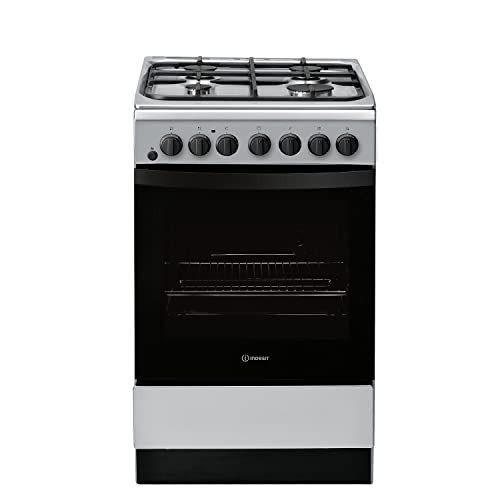20 Resources That'll Make You More Effective At Oven And Hob
Understanding Kitchen Ovens and Hobs: A Comprehensive Guide
The kitchen is typically described as the heart of the home, and for great reason. Oven And Hobs For Sale is where households come together, meals are prepared, and memories are produced. Central to this cooking sanctuary are two vital home appliances: the kitchen oven and the hob. Comprehending their features, types, and functionalities is vital for efficient cooking and can considerably enhance a home chef's experience. This post will explore the world of kitchen ovens and hobs, analyzing their various types, benefits, and suggestions for making informed options.
Tabulation
- Intro to Kitchen Ovens
- Kinds of Ovens
- Standard Ovens
- Convection Ovens
- Microwave Ovens
- Steam Ovens
- Understanding Hobs
- Types of Hobs
- Gas Hobs
- Electric Hobs
- Induction Hobs
- Advantages of Using Ovens and Hobs
- Selecting the Right Oven and Hob for Your Kitchen
- Upkeep Tips for Ovens and Hobs
- FAQs
- Conclusion
1. Intro to Kitchen Ovens
Ovens are indispensable devices in contemporary kitchens. They supply a regulated environment for baking, roasting, and broiling food. With different designs and functionalities, choosing the best oven can dramatically affect cooking times, food texture, and taste.
2. Kinds of Ovens
Conventional Ovens
Standard ovens are the most common type discovered in homes. They use either electric or gas power to warm the interior and normally include a single cooking space.
Advantages:
- Versatile for baking, roasting, and broiling.
- Usually inexpensive.
Convection Ovens
Stove resemble standard ovens however come equipped with a fan that circulates hot air throughout the cooking chamber. This leads to even cooking and browning.
Advantages:
- Reduced cooking times due to improved airflow.
- Boosted browning and crisping of foods.
Microwave Ovens
Microwave use electro-magnetic radiation to heat food quickly, making them convenient for thawing and reheating leftovers.
Benefits:
- Very quick cooking times.
- Energy effective.
Steam Ovens
Steam ovens make use of steam to cook, protecting the moisture and nutrients in food. They are particularly popular amongst health-conscious cooks.
Advantages:
- Healthier cooking option.
- Retains minerals and vitamins in food.
3. Comprehending Hobs
Hobs, also called cooktops, are the flat surfaces on which pots and pans are positioned to cook food. They can be integrated into kitchen countertops and are offered in various designs, fuel types, and designs.
4. Types of Hobs
Gas Hobs
Gas hobs use gas burners as their heat source, offering immediate heat and exact temperature control.
Benefits:
- Excellent control over cooking heat.
- Typically more affordable to run than electric ones.
Electric Hobs
Electric hobs heat using electric coils or glass surfaces. They may take longer to warm up than gas, however they provide a smooth cooking surface and are simpler to clean up.
Benefits:
- Even heat circulation.
- Safe, as there's no open flame.
Induction Hobs
Induction hobs utilize electro-magnetic energy to directly heat pots and pans. They need suitable cookware and offer instant responsiveness.
Benefits:
- Highly energy-efficient.
- Faster cooking times and accurate temperature control.
5. Benefits of Using Ovens and Hobs
Both ovens and hobs come with their own special set of benefits that can boost any cooking experience. Here are a couple of crucial benefits:
- Diverse Cooking Options: Both appliances enable a range of cooking approaches consisting of boiling, frying, roasting, baking, and steaming.
- Time Efficiency: Modern ovens and hobs often include quick cooking settings, which save time in the kitchen.
- Accuracy Cooking: With advanced features, users can achieve much better outcomes in temperature level control and cooking times.
6. Picking the Right Oven and Hob for Your Kitchen
When selecting the right oven and hob, different factors need to be thought about:
- Size: Ensure that the appliance fits comfortably in your kitchen area.
- Cooking Style: Consider what kinds of food you regularly prepare.
- Fuel Type: Whether gas or electric, think about schedule and effectiveness in your location.
- Budget: Determine your spending plan and find home appliances that satisfy your needs within that variety.
List for Choosing Your Oven and Hob:
- Assess kitchen area.
- Determine your cooking preferences.
- Determine power source availability.
- Compare features and specifications.
- Set a spending plan variety.
7. Upkeep Tips for Ovens and Hobs
Routine maintenance is vital for keeping ovens and hobs in optimal condition. Here are some upkeep suggestions:
- Clean Regularly: Wipe down surfaces after each use and deep tidy occasionally.
- Inspect Seals: For ovens, check door seals to ensure they are airtight.
- Analyze Burners: For gas hobs, keep burners without food particles to keep reliable heating.
- Change Filters: If your oven has a filter, change it as recommended by the maker.
8. FAQs
1. What is the distinction in between a standard oven and a convection oven?Conventional ovens
cook food through radiant heat, while convection ovens circulate hot air, leading to much faster and more even cooking. 2. Do induction hobs require special cookware?Yes,
induction hobs need ferrous cookware that is capable of being magnetized to work efficiently. 3. Are steam ovens worth the investment?For health-conscious individuals or those who often prepare vegetables and fragile foods, steam ovens can be worth the investment
due to their ability to keep nutrients. 4. Can I integrate an oven and hob into one unit?Yes, lots of makers use combined systems called variety cookers, which incorporate both an oven
and hob into a single appliance. 9. Conclusion Kitchen ovens and hobs are crucial parts of any culinary space, each offering special functions and performances fit for different cooking designs.
By comprehending the
kinds of ovens and hobs readily available, their benefits, and how to maintain them, home chefs can cultivate a more efficient and pleasurable cooking experience. Whether one is an experienced cook or a novice, making notified decisions about these important kitchen devices is important. 